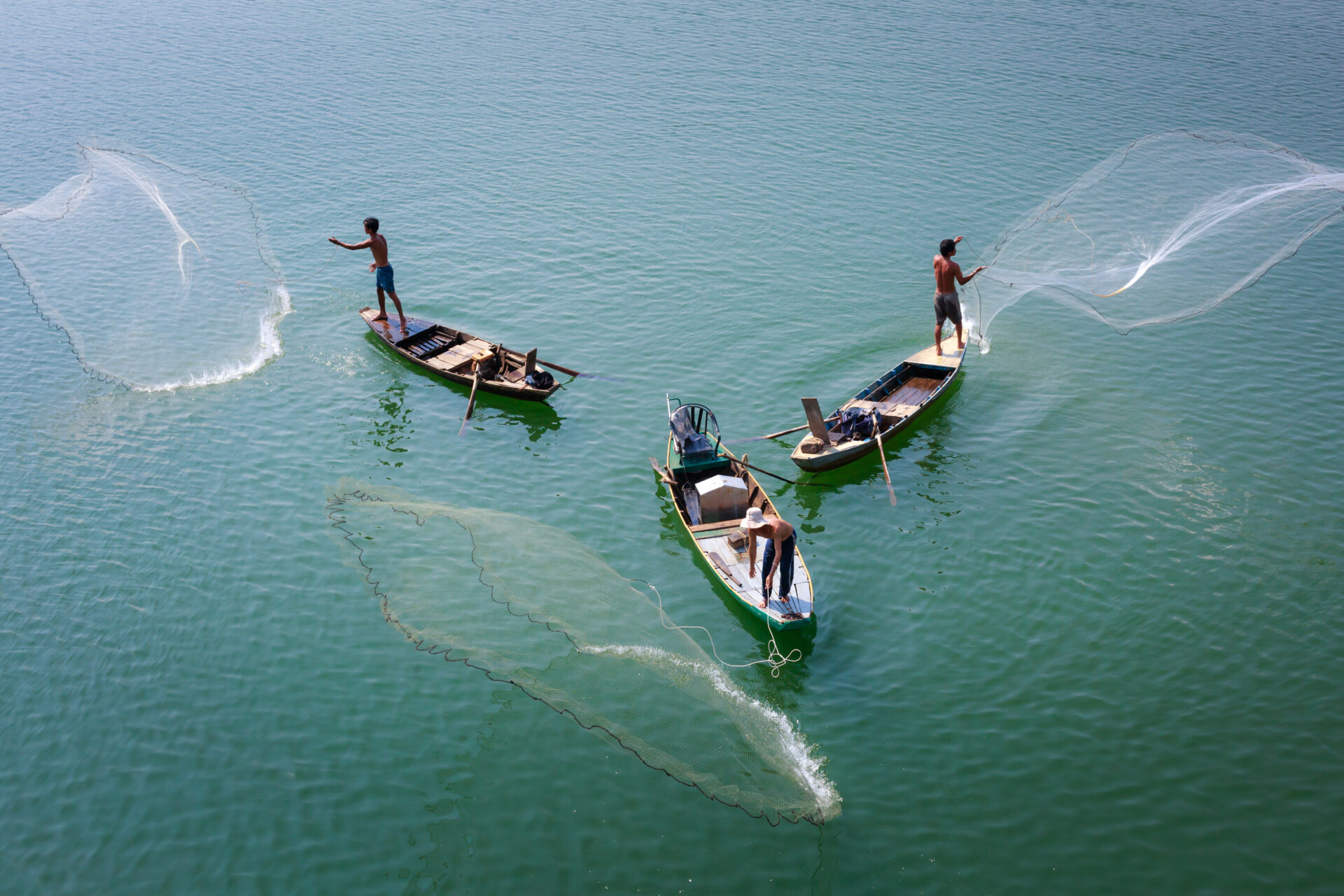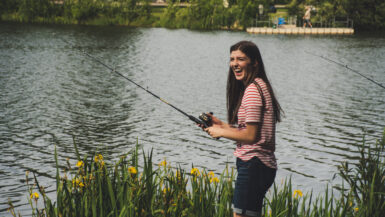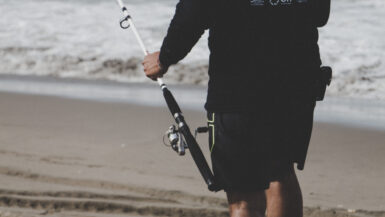Fishing is one of the most popular outdoor activities, and it can be incredibly gratifying when you catch a fish. However, success in fishing can be heavily tied to the type of fishing line you use. Different fish species need different types of fishing lines, so it’s important to know which type of line to use for each type of fish. In this article, we’ll talk about the different types of fishing lines available and which ones are best for different freshwater fish species. We’ll look at what type of line is best for trout, bass, walleye, panfish, and catfish, as well as other factors to consider when selecting a fishing line. Read on to learn more about choosing the right fishing line for different freshwater fish species.
Identifying Fish Species
Knowing the types of fish species in the waters you plan to fish in is essential for selecting the right fishing line. Each species has its own characteristics, sizes and habitats. Identify the fish species you will target, their size range and habitats in order to properly select a fishing line. Some common freshwater fish species in North America include bass, trout, crappie, catfish, bluegill and muskie.
Understand the Types of Fishing Lines
There are four main types of fishing lines – monofilament, fluorocarbon, braided, and hybrid. Monofilament is the most commonly used line. It is very stretchy, making it the ideal choice for topwater and light tackle fishing. Fluorocarbon lines are denser and sink faster, making them the best choice for bottom fishing. Braided fishing lines are very strong, have a thinner diameter and don’t stretch. They are usually used for large or aggressive fish. Hybrid lines combine the advantages of monofilament and braided lines and are the most versatile type of line.
Choose the Right Line for Your Target Species
The type of line you choose depends on the species of fish you are targeting. For bass, trout, and crappie, a light to medium monofilament or braided line is the best choice. Catfish and bluegill fishing requires a heavy monofilament line since these fish prefer deep waters and heavier weights. When fishing for muskie and large pike, a heavy braided line is the way to go.
Factors to Consider When Selecting a Line
In addition to the types of fish species, several other factors need to be taken into consideration when selecting a fishing line. Water clarity, conditions and temperatures all affect the performance of a fishing line. If the water is clear, opt for a line with a lower visibility. For murky waters, a thicker line will help you detect bites. If the water temperature is colder, select a line with a higher tolerance for colder temperatures. The size of the lure and hook, casting distance and the rod weight should also be considered when choosing the right fishing line.
Choosing the Right Fishing Line for Different Freshwater Fish Species
Fishing lines play an important role in catching fish, depending on the species and conditions. Before selecting a fishing line, identify the target species, understand the different types of lines available, and take into account other factors such as water clarity, temperature, lure size and distance casting. With the right knowledge and selection, you will be equipped with the right line for any freshwater fish species.
Understanding Fishing Line Characteristics
Fishing line comes in a variety of materials, sizes, and styles. Monofilament is the most common type and is most often used for freshwater fishing. It is made from one continuous strand of plastic, and comes in a wide range of strengths and diameters. Braided line is thin, strong, and very durable. It is most commonly used by saltwater anglers because it is highly visible in the water and will not stretch as much as mono. Fluorocarbon line is nearly invisible in the water and is favored for fly fishing. It is also strong and can be used for a variety of species.
Factors to Consider When Choosing Fishing Line
When choosing a fishing line for different freshwater species, there are many factors to consider. It is important to look at the species of fish you are targeting and the type of water they live in. If you plan to fish in rivers or streams, you should choose a line that is strong enough to cast long distances. For trout or bass, you may want to opt for a more lightweight line that will be less visible.
Understanding Line Strength and Diameter
The first factor to consider when choosing the right fishing line for different fish species is its strength and diameter. Line strength is measured in pound-test, which is the amount of pressure it can withstand before breaking. It is important to select a fishing line that is strong enough for the species you plan to catch. The diameter of the line also affects its visibility in the water and its casting distance.
Invisible or Visible Fishing Line?
In addition to its strength and diameter, it is important to consider the visibility of a fishing line when selecting the right one for different freshwater species. When fishing for smallmouth bass or other species that are line-shy, an invisible line such as fluorocarbon is preferable. If the fish are not line-shy, then a visible line such as monofilament or braided line may be used.
Choosing the Right Fishing Line for Freshwater Species
Before choosing a fishing line for different freshwater species, it is essential to consider several factors such as its strength and diameter, as well as its visibility in the water. By taking these factors into account, you can ensure you select the best line for the species you plan to catch. Doing so will help you catch more fish and have a successful day out on the water.
Choosing the Right Line for Different Species
When it comes to freshwater fishing, the type of line you use can make or break the success of your catch. Depending on the size, type, and species of fish you are targeting, you will need to select the correct fishing line for the job.
Light Lure Fishing Lines
For smaller fish like crappie, bluegill, and sunfish, you should use a light lure fishing line. This includes monofilament, fluorocarbon, and braided lines. Monofilament lines are relatively inexpensive and are the most popular choice for light lure fishing. It is easy to work with, knots well, and is flexible enough to handle light lures with ease.
Fluorocarbon lines are popular for light lure fishing because they are virtually invisible underwater. This is helpful for spooking fish that prefer clear water. Braided lines are also a good choice for light lure fishing. They are highly durable and can be useful for handling snaggy environments.
Heavy Lure Fishing Lines
When targeting larger fish like bass, trout, and catfish, you should use a heavy lure fishing line. This includes monofilament, fluorocarbon, and braided lines. Monofilament lines are still a popular choice for heavy lure fishing. It is strong, flexible, and resistant to abrasion.
Fluorocarbon lines are popular for heavy lure fishing because of their sensitivity, strength, and invisibility. Braided lines are also a great choice for heavy lure fishing. This type of line is highly durable and can be useful in snaggy environments.
Types of Line Strength
The type of line you choose should not only depend on the type of fish you are targeting, but also the strength or “pound test” you select. Pound test is the measure of a line’s diameter and strength. Lighter pound test lines are ideal for smaller fish, while heavier pound tests are better for larger fish.
It is important to select a pound test line that matches the size and type of fish you are targeting. When in doubt, it is best to select a line that is slightly heavier than you think you might need. This will help ensure that your line will be able to handle the fish.
Tips for Choosing the Right Fishing Line
When selecting fishing line for different freshwater fish species, it is important to consider the type of line you need, the strength of the line, and the type of fish you are targeting. Monofilament, fluorocarbon, and braided lines are all popular choices and can be used differently depending on the size and type of fish. Additionally, the pound test of the line should be selected depending on the size of the fish. Choosing the right fishing line can help you land the big one!
Tips for Changing Line Types
Choosing the right fishing line for the type of fish you are targeting is essential for a successful catch. Depending on the species, the strength, type, and size of the fishing line should vary. Different freshwater fish species require different fishing lines. Knowing which line types are best for each species will give you the greatest chance for success.
Types of Fishing Lines for Different Fish Species
Fluorocarbon fishing lines are great for most freshwater species, as they are very strong, invisible to the fish, and resistant to abrasion. Monofilament is a good choice for targeting bass, carp, catfish, and bluegill. It is more pliable than the other lines, making it ideal for spinning reels. For trout and panfish, try using a single strand of fishing line. This type of line will sink quickly and provide a more natural presentation. Braided fishing lines are great for heavy cover situations and ideal when trolling.
Tips for Changing Line Types
When changing line types, it is important to make sure that the line is securely attached to the reel and that it is not too tight. Too much tension on the line can cause it to fray, break, or even snap. It is also important to use the proper knots to attach the line to the reel or the lure. Make sure to use a reliable, professional knot for best results. Finally, inspect your line on a regular basis for signs of wear and tear. As the line gets older, it will become less reliable and potentially break during your fishing trip.
Best Lines for Popular Species
Choosing the right fishing line for a particular freshwater fish species can be a daunting task. Not only do you have to consider the strength of the line and the type of bait you’re using, but you also have to take into account the size and type of fish you are targeting. In this article, we’ll present some of the best fishing lines for popular freshwater fish species, and some tips for matching the right line for the species.
Lightweight Line for Smaller Species
For smaller fish species, such as bluegill, sunfish, and crappie, a light monofilament fishing line is the best choice. The lighter the line, the better it will be for casting, and the more delicate it will be when the fish takes the bait. A line that is too heavy can cause the bait to sink too quickly or the fish to feel a lot of resistance when taking the bait. Look for a line that is four to eight pound test, but if you are fishing for very small species such as juvenile bass, you may want to choose a light two-pound test line.
Stiff Line for Bigger Species
For larger fish species, such as bass and trout, a stiffer monofilament line is recommended. The stiffer lines make it easier to cast the bait and are more resistant to abrasion and breaking. Look for a line that is between eight and 20 pound test. Any line heavier than this runs a greater risk of snagging on weeds and other objects.
Choosing Braided Line
Braided fishing line is designed to be tough and resistant to abrasion and snapping. It is a great choice for fishing in areas where the line is likely to be snagged on weeds or other objects. However, braided line is much heavier than monofilament line, so it is best used only when fishing for larger fish species. Look for a line that is between 15 and 40 pound test.
Fluorocarbon Fishing Line
Fluorocarbon fishing line is a great choice for fishing in clear water conditions, as it is almost invisible in the water. The line is also abrasion and UV-resistant, and has very low stretch, making it great for detecting bites and setting the hook. Fluorocarbon fishing lines are ideal for all freshwater fish species, but are best for larger species, such as bass and walleye. Look for a line that is between 10 and 20 pound test.
Selecting the Right Fishing Line
When selecting a fishing line for a particular freshwater fish species, consider the size of the fish you are targeting, the type of bait you are using, and the type of water you are fishing in. For smaller species, a light monofilament or fluorocarbon line is your best bet. For larger species, a stiff monofilament or braided line will work well. When fishing in clear water, fluorocarbon line is the best choice. And keep in mind, the bigger the fish you are targeting, the heavier the line you’ll need.
Fishing Strategies for Success
Choosing the right fishing line for various freshwater fish species is essential for successful fishing. Matching the right line to the species, environment, and gear is key for getting the desired results. Depending on the fish species, anglers should choose the appropriate line, whether it is monofilament, fluorocarbon, or braid. The test strength should then be determined. Monofilament is most popular for general angling needs, and works best for spin fishing. Fluorocarbon is great for spinning, baitcasting, and fly fishing, providing more sensitivity, abrasion resistance, and invisibility. Braided lines are most used for heavier specimens and will provide the extra strength that is needed. If the angler does their research and chooses the right line for their freshwater fish species, they will surely increase the chances for a successful fishing experience.





Leave a reply